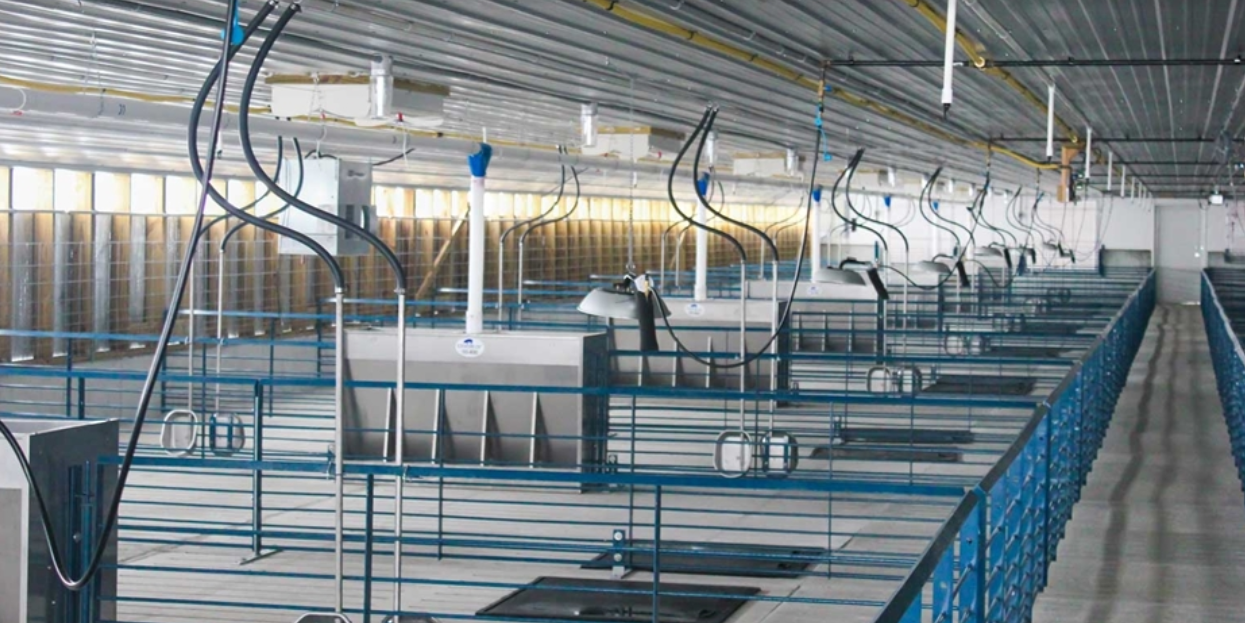



Preparing hog buildings for extended out times

1. Get all the feed out!
It may not be easy, but this is the No.1 item to concern yourself with when preparing a house for extended downtimes. Feed left in the lines or feed bins will attract mice and rats, which can grow to infestations that will plug the lines and prevent them from running on startup. Also, feed left in the lines can mold and harden, resulting in augers breaking or motors overheating and stalling when started. It is also a good idea to remove feeders and turn them upside down, if possible, to ensure feeders are empty and dry.
2. Drain the water.
Shut off and drain all water lines, including drinkers, foggers, and cool cells. Open the ball valves at the end of the water lines and trigger the nipples to remove any water in the lines helping to prevent a possible buildup of pathogens. After draining and cleaning evaporative systems, remove pumps and move to inside storage. Remove medicators from their plumbing, allowing water to drain. Disassemble medicator and soak for 24 hours in soapy water to loosen any mineral buildup. Flush parts and reassemble.
3. Grease and oil.
Put a shot of grease in every zerk on fans, curtain machines, corner wheels, etc. This lubrication is especially important on older bearings or shafts with more wear.
4. Control fly populations.
Use dry scatter baits on ledges and other flat surfaces to actively control flies. Spray or paint liquid baits to kill flies on walls and under the eaves of the buildings.
5. Rodent control.
The first step to rodent control is to remove all feed from the building. Remove all cardboard boxes, coveralls, and clutter from the office that mice or rats could use for nesting. Fill the bait stations and continue to monitor for rodent activity. Always remember to rotate the active ingredient in your rat baits at least every six months.
Active maintenance
After prepping and closing down the building, controlling the moisture and gas levels takes priority. For curtain-sided buildings, this can be as simple as lowering the curtains allowing air to circulate. Enclosed buildings will require a minimum amount of ventilation. Many controllers have an empty building setting allowing you to set the minimum ventilation rates. Leaving the controller functioning and powered on also enables you to receive any alarm alerts. Now is also a good time to add surge protection to the electrical system if not already installed. The surge protector will prevent a lightning strike, leaving your controller inoperable without your knowledge, creating an unexpected problem on startup.
An empty feed system with the bearings greased, gear head oil levels intact, and the building's ammonia under control should be fine if inactive for 60 days or less. Much past this time frame, the system would benefit from running periodically. Running the system will loosen any rust, activate the electrical contacts, and point out any problems that have developed, which you can then address and be ready when your next group arrives. Check auger gear head oil levels and top if low. The oil will settle to the bottom gear head and may leak from seals during periods of inactivity.
The same thing holds true for the full ventilation system. Power up the system to run the fans and cycle the curtain machines and vent actuators. Activate sidewall and cool cell curtains up and down, paying attention to any curtain bunches that might harbor rodents or insects.
By sticking to a regular inspection schedule during long out periods will mean your buildings will be ready when it's time for your next group to arrive.








